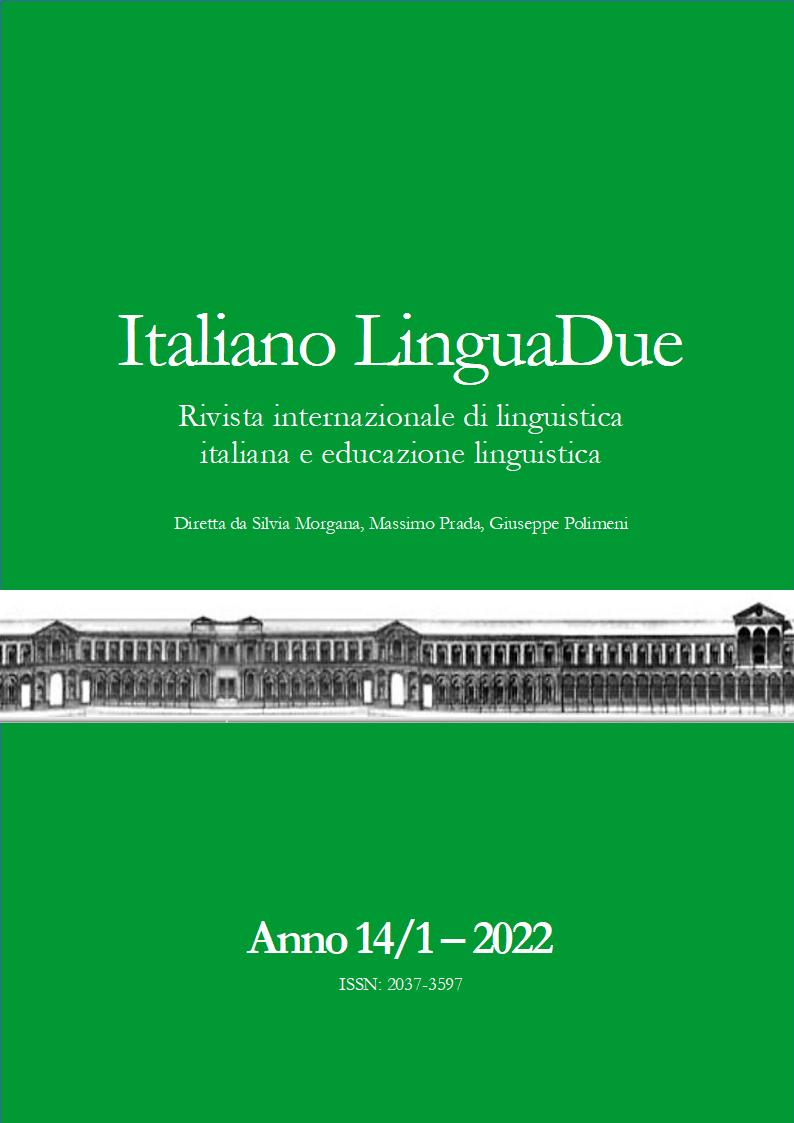“ALTRE RICETTE DI PETRONILLA” (1937): OSSERVAZIONI LINGUISTICHE
DOI:
https://doi.org/10.54103/2037-3597/18334Abstract
L’indagine si concentra sull’aderenza del ricettario al canone della prescrittività, evidenziandone i supporti lessicali, che fanno riferimento al ruolo dell’enunciatore e alla pressione sul destinatario, le forme verbali ricorrenti e gli allocutivi. Lo schema comune alle ricette è articolato in promessa – difficoltà e avvertimenti – risultato, con una promozione dei piatti che ricorda molto da vicino il messaggio pubblicitario: elativi, alterati, anafore, nell’ambito di una concezione della buona cucina i cui parametri sono l’economicità, la velocità e la facilità di realizzazione, la sostanziosità, la bontà al gusto, la novità, il “far figura”. Si è dato spazio in particolare alla dialogicità della parola di Petronilla: verticale, con la costante interpellazione delle lettrici riguardo al numero delle persone, alle difficoltà nel realizzare una pietanza, alle piccole preferenze nell’approntarla; orizzontale, all’interno del testo, fra i personaggi che compaiono e che interagiscono fra loro. Della fitta trama di domande fittizie alle lettrici si è ricercato il valore pragmatico e testuale, a partire da quelle con cui inizia la presa di contatto con le «amichette» fino allo stereotipato «Non v’ho detto?» che sottolinea, nel finale, il raggiungimento dei risultati promessi. Sulla base dell’impalcatura pragmatica e retorica e delle annotazioni di carattere metalinguistico (chiarimenti sul nome dei piatti e sulla loro origine, spiegazioni riguardanti la terminologia medica) la ricerca rintraccia alcune analogie, pur con le difformità lessicali che la diversità delle materie trattate impone, con la lingua dell’altro personaggio inventato dall’autrice, il dottor Amal.
Other recipes by Petronilla (1937): linguistic observations
The investigation focuses on the cookbook’s adherence to the canon of prescriptiveness, highlighting its lexical supports, which refer to the role of the enunciator and the pressure on the addressee, recurrent verbal forms and allocutives. The common pattern of the recipes is divided into promise-difficulty and warnings-result, with a promotion of the dishes that closely resembles the advertising message: elatives, alteratives, anaphora, in the context of a conception of good cooking whose parameters are affordability, speed and ease of preparation, substantiality, tastiness, novelty, and “making an impression”. Particular space was given to the dialogical nature of Petronilla’s words: vertical, with the constant questioning of the readers about the number of people, the difficulties in making a dish, the small preferences in preparing it; horizontal, within the text, among the characters who appear and interact with each other. Within the dense web of fictitious questions to the readers, the pragmatic and textual value has been sought, starting with those with which the contact with the “little friends” begins and ending with the stereotypical “Didn't I tell you?” that emphasizes, in the finale, the achievement of the promised results. On the basis of the pragmatic and rhetorical scaffolding and metalinguistic annotations (clarifications on the name of the dishes and their origin, explanations concerning medical terminology), the paper traces some similarities, albeit with the lexical dissimilarities that the diversity of the subjects dealt with imposes, with the language of the other character invented by the author, Dr. Amal.
Dowloads
Pubblicato
Versioni
- 2022-07-28 (2)
- 2022-07-18 (1)




